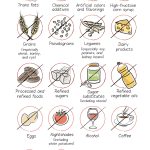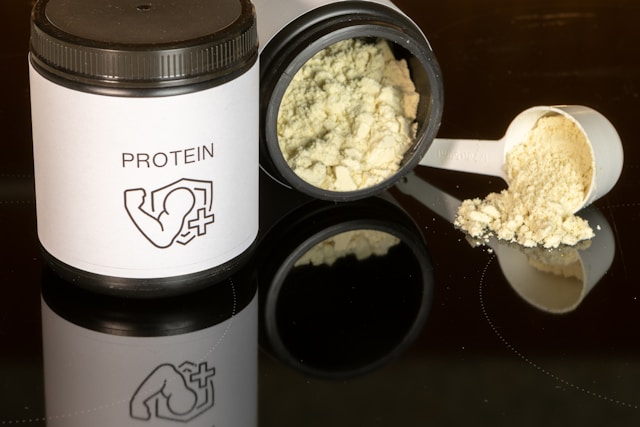Note: This information is for when you lift weights! Not before a cardio session.
One of our clients was on an extremely low-carb diet and did intermittent fasting throughout the week(M-F). For those who don’t know what intermittent fasting is, it’s when you limit yourself to eating once or twice a day. Most intermittent fasters are also low-carb dieters. Why? Common logic says that if you don’t enough carbs on a regular basis, your body has no choice but to burn fat; if you’re eating low carb and only eating twice a day, then for a majority of the day, you have to be burning fat. Makes sense right? This approach worked for a couple months with our client until they realized they had SLOWLY gained fat. We’ll explain why this happens later in the article.
While on a low-carb diet, this client found that their trips to the gym were always flat. You might be able to relate. It’s feeling like something is missing. That extra “umph” you use to struggle and push through the final rep of your workout. You might find that despite working out multiple times a week, you’re not getting any stronger in any of your lifts.
If you’re not getting stronger in the gym you could be jepordizing your muscle and fat loss gains. Some people never see their low-carb diet as the root cause of all these issues.
The importance of pre-workout carbs
When you contract and push your muscles, the energy for those movements comes from carbs” (1). Some may think that if we don’t eat carbs before working out our body will burn fat during the training session. Is this true?
Here’s the science unpacked
Think of your body as having 3 fuel tanks. One fat fuel tank, one carb fuel tank, and one muscle fuel tank. As breathing humans we’re always using energy and that energy is going to come from one of those three fuel tanks. Ideally, you want to pull from the fat fuel tank as much as we possible. Unfortunately your body is designed to pull from certain fuel tanks in certain conditions. The two situations are anaerobic and aerobic exercises.
Intense moments of exercise like weight training is an anaerobic exercise. Carbs are your body’s preferred energy source during anaerobic exercise; Anaerobic exercises cannot use fat for energy, they force the body to get energy from your carb tank or your muscle fuel tank(2). When there is no fuel in the carb fuel tank, your body is forced to tap into your muscle fuel tank! The process of pulling energy from the muscle tank is done by breaking down your muscles for energy which leads to smaller muscles (3). You may be lighter when you step on a scale after beginning to work out, but sadly, you could be losing muscle mass. If you keep working out without carbs you may turn what some call ‘skinny fat’. Without carbs in your fuel tank you may find it difficult to feel strong during your workout. Why? The chemical processes that take place when converting your muscle proteins into energy are slower than the chemical processes of converting carbs into energy(3).
Why does this matter?
We don’t think there are many times where you want to intentionally lose muscle. 2.) To look “cut”, your body needs to constantly have its muscle-building process going. This process gets activated after a workout. Ideally you exert as much muscle lifting energy as possible to sends signals to your body that it needs to get stronger and that it needs to build up more muscle(4&5). It easier to crush your workouts if you have the energy you need which pulls from your carb fuel tank, not your muscle fuel tank!
Ok, so how do we fill the carb fuel tank up?
Try to eat 30–40g of carbohydrates ~1hour before your workout in 1 of 2 ways:
Eat a complex carb 1–2 hours before working out.
Eat a simple carb 30–45 minutes before your workout
** Fuel in the carb tank == glucose in your bloodstream that can be used up as energy
(1)Sharon L. Miller and Robert R. Wolfe, “Physical Exercise as a Modulator of Adaptation to Low and High Carbohydrate and Low and High Fat Intakes,” European Journal of Clinical Nutrition 53, no. S1 (1999): S112–19.
(2)Rahnama, Sahand Rahnama,. “Timing is Everything: Why the Duration and Order of Your Exercise Matters.” Http://umich.edu/. University of Michigan Medical School, 17 Oct. 2015. Web.
(3)Krista R. Howarth, Stuart M. Phillips, Maureen J. MacDonald, Douglas Richards, Natalie A. Moreau, and Martin J. Gibala, “Effect of Glycogen Availability on Human Skeletal Muscle Protein Turnover during Exercise and Recovery,” Journal of Applied Physiology 109, no. 2 (2010): 431–38. doi: 10.1152/japplphysiol.00108.2009.
(4)Alfred L. Goldberg, Joseph D. Etlinger, David F. Goldspink, and Charles Jablecki, “Mechanism of Work-Induced Hypertrophy of Skeletal Muscle,” Medicine and Science in Sports 7, no. 3 (1975): 185–98.
(5)Schoenfeld, “The Mechanisms of Muscle Hypertrophy and Their Application to Resistance Training,” 2857–72.




